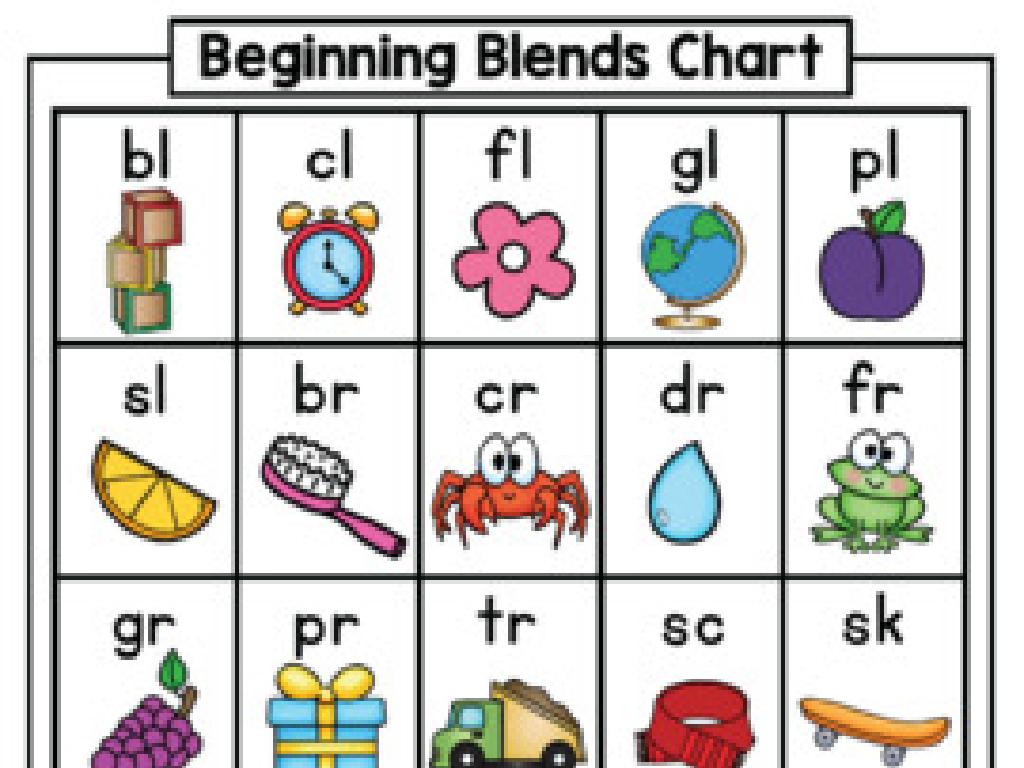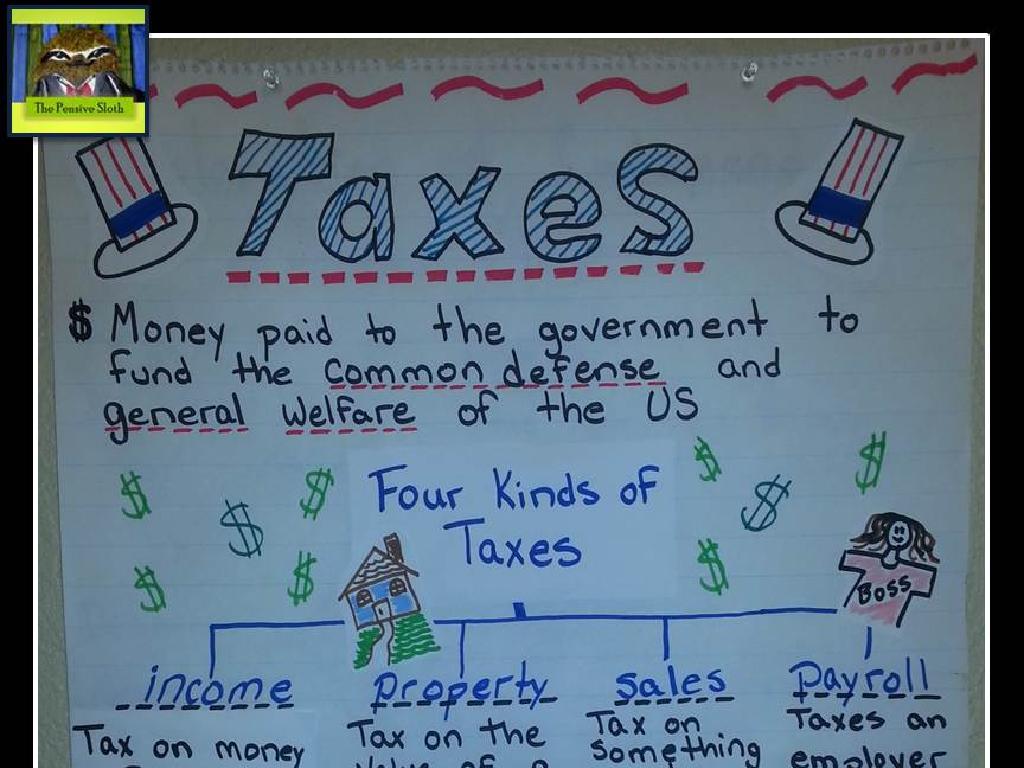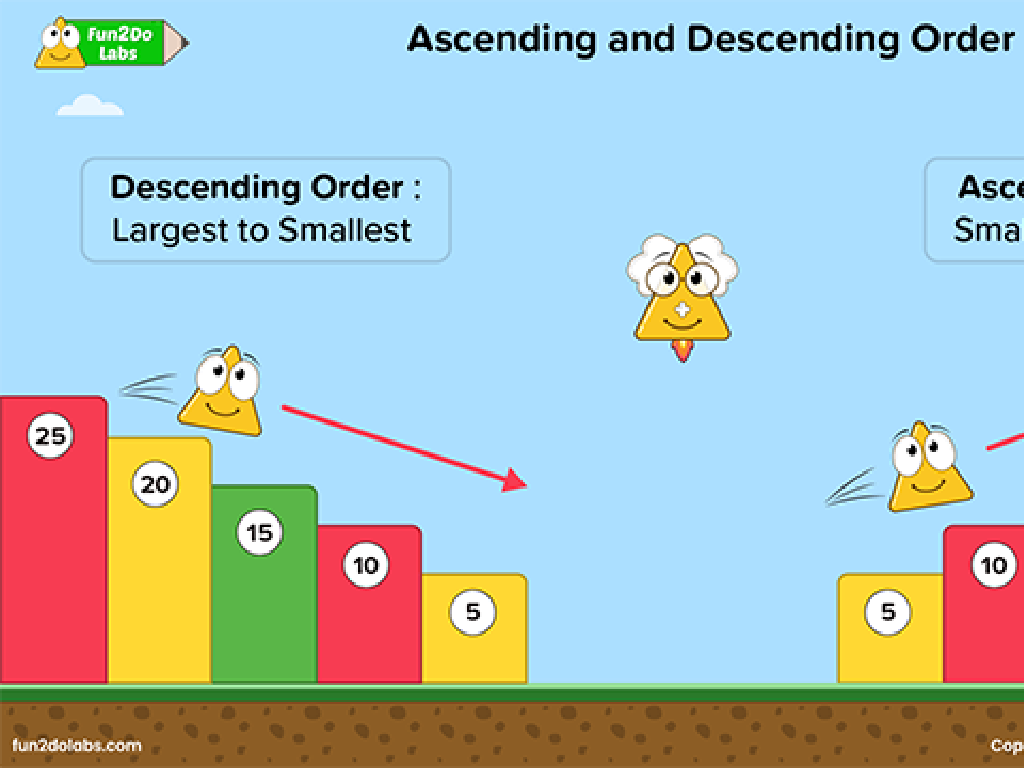Decompose Fractions Into Unit Fractions Using Models
Subject: Math
Grade: Fourth grade
Topic: Understand Fraction Addition And Subtraction
Please LOG IN to download the presentation. Access is available to registered users only.
View More Content
Today’s Adventure: Decomposing Fractions!
– Understanding whole & parts
– A fraction represents a part of a whole.
– Exploring unit fractions
– Unit fractions have a numerator of 1.
– Decomposing into unit fractions
– Break down fractions into sum of unit fractions.
– Visualizing with fraction models
– Use models like pie charts to show parts.
|
Begin the lesson by explaining that fractions represent parts of a whole, which is a concept that students are likely familiar with. Introduce unit fractions as the building blocks of all other fractions, emphasizing that they have a numerator of 1. Demonstrate how to decompose a fraction into a sum of unit fractions using visual aids like fraction strips or pie charts, which can help students better understand the concept. Encourage students to create their own models to represent different fractions. This visual approach will aid in their comprehension of how larger fractions are made up of smaller, unit fractions.
Understanding Fractions
– A fraction is part of a whole
– Like a slice of pizza is a part of a whole pizza
– Numerator and denominator explained
– Top number (numerator) shows how many parts we have. Bottom number (denominator) shows how many equal parts the whole is divided into.
– Examples: 1/2, 3/4, 5/8
– 1/2 means 1 out of 2 parts, 3/4 means 3 out of 4 parts, 5/8 means 5 out of 8 parts
|
This slide introduces the concept of fractions to fourth-grade students. Begin by explaining that a fraction represents a part of a whole, similar to how a slice of pizza is just a part of the entire pizza. Clarify the roles of the numerator and the denominator, ensuring students understand that the numerator indicates the number of parts being considered, while the denominator shows the total number of equal parts that make up the whole. Use visual aids like pie charts or fraction bars to illustrate examples such as 1/2, 3/4, and 5/8, showing these fractions as parts of a whole. Encourage students to think of other examples of fractions they encounter in daily life.
Unit Fractions: Building Blocks of Fractions
– What is a unit fraction?
– A fraction with a numerator of 1
– Unit fractions represent parts
– They show one part of a whole object or set
– Examples: 1/2, 1/3, 1/4, 1/5
– Each example shows a whole split into equal parts
– Visualizing unit fractions
– Use shapes or objects to see the parts
|
This slide introduces unit fractions, which are the simplest form of fractions with a numerator of 1. It’s crucial for students to understand that unit fractions represent one part of a whole, which can be a single object or a group of objects. Provide examples like 1/2, 1/3, 1/4, and 1/5 to illustrate the concept. Encourage students to visualize unit fractions using models such as pie charts, bar models, or objects divided into equal parts. This foundational knowledge will help them grasp more complex fraction operations in future lessons.
Decomposing Fractions into Unit Fractions
– Break down fractions into smaller parts
– Each smaller part is a unit fraction
– A unit fraction has a numerator of 1
– Example: Decompose 3/4
– 3/4 can be seen as 1/4 + 1/4 + 1/4
– Practice with different fractions
– Try decomposing 2/3 or 5/6 on your own
|
This slide introduces the concept of decomposing fractions into unit fractions, which is a foundational skill for understanding fraction addition and subtraction. Start by explaining that decomposing means breaking down a fraction into a sum of smaller fractions, all of which are unit fractions (fractions with a numerator of 1). Use visual aids like pie charts or fraction bars to show how 3/4 can be divided into three parts, each being 1/4. Encourage students to practice this skill by decomposing other fractions such as 2/3 or 5/6, using models or drawings to visualize the process. This will help them grasp the concept of equivalent fractions and prepare them for more complex operations involving fractions.
Decomposing Fractions with Models
– Visualize fractions with models
– Models like pie charts or fraction bars help us see parts of a whole.
– Use shapes to represent fractions
– Circles can be pizza slices, bars can be chocolate bars, each divided into equal parts.
– Breaking down fractions step-by-step
– Divide a shape into equal parts and shade to show the fraction.
– Practice with circles and bars
– Let’s try decomposing 1/2 into 1/4 + 1/4 using a circle model.
|
This slide introduces the concept of decomposing fractions using visual models, which is a key skill in understanding fraction addition and subtraction. By using common shapes like circles and bars, students can better grasp the idea of breaking down a fraction into smaller, unit fractions. Demonstrate how to divide a circle or a bar into equal parts and shade the appropriate sections to represent a given fraction. Then, show how these parts can be added together to form the original fraction. Encourage students to practice with different shapes and fractions to build their confidence and understanding.
Let’s Practice: Decomposing Fractions
– Decompose 2/3 into unit fractions
– 2/3 = 1/3 + 1/3
– Show 5/6 as a sum of unit fractions
– 5/6 = 1/6 + 1/6 + 1/6 + 1/6 + 1/6
– How to decompose 4/5?
– 4/5 = 1/5 + 1/5 + 1/5 + 1/5
– Understanding unit fractions
|
This slide is an interactive class activity where students will practice decomposing fractions into unit fractions using models. For 2/3, guide the students to understand that it can be split into two parts, each being 1/3. Similarly, for 5/6, they should see it as five parts, each being 1/6. For 4/5, it’s four parts of 1/5 each. Encourage students to draw models representing each fraction as a shape divided into equal parts, and shading the corresponding unit fractions. This visual representation will help solidify their understanding of how fractions can be broken down into smaller, equal parts. Have different students share their models and explain the process to the class. This will reinforce their learning and help them grasp the concept of unit fractions as building blocks of other fractions.
Class Activity: Fraction Art
– Create fraction art with paper circles
– Break down fractions into unit fractions
– Divide a circle into equal parts to show unit fractions
– Share your art with the class
– Explain the fractions in your art
– Tell us how you made each part of your art piece
|
This activity is designed to help students visually understand the concept of decomposing fractions into unit fractions. Provide each student with paper circles and instruct them to create art by dividing the circles into equal parts, each representing a unit fraction. Once they’ve created their art, have them share with the class, explaining how they broke down different fractions into unit fractions. This will reinforce their understanding of fractions and provide a hands-on experience. For the teacher: Prepare different colored paper circles, scissors, and glue. Suggest creating designs like flowers or animals using the circles. Have a gallery walk at the end where students can view each other’s art and discuss the fractions represented.
Review: Decomposing Fractions
– Recap on fraction decomposition
– Breaking down fractions into smaller ‘unit fractions’.
– Unit fractions build bigger fractions
– Like building blocks, unit fractions combine to form larger fractions.
– Questions and examples from class
– Share your questions or any examples you’ve thought of!
|
This slide is meant to review the concept of decomposing fractions into unit fractions. Start by recapping the process of breaking down a fraction into a sum of its unit fractions. Emphasize how understanding unit fractions (fractions with a numerator of 1) can help students better grasp the composition of larger fractions. Encourage students to ask questions about any part of the lesson they found challenging and to provide examples from the exercises they’ve completed. This will help ensure they have a solid understanding of the concept and are ready to apply it to addition and subtraction of fractions. Prepare to address common misconceptions and provide additional examples if necessary.
Homework Challenge: Unit Fractions
– Decompose 7/8 into unit fractions
– Break down 7/8 into seven 1/8s
– Draw a model for 9/10
– Illustrate nine 1/10s to represent 9/10
– Show each fraction as units
– Review work in the next class
|
This homework assignment is designed to reinforce the concept of decomposing fractions into unit fractions using visual models. Students will take the fraction 7/8 and break it down into seven individual 1/8 pieces, helping them to visualize the concept of unit fractions. Similarly, they will draw a model to represent 9/10 as nine separate 1/10 pieces. Encourage students to use grid paper or fraction circles to help them draw their models accurately. In the next class, we will review their work, discuss any challenges they faced, and celebrate their successes. This will also provide an opportunity to address any misconceptions and to reinforce the concept through peer learning.





